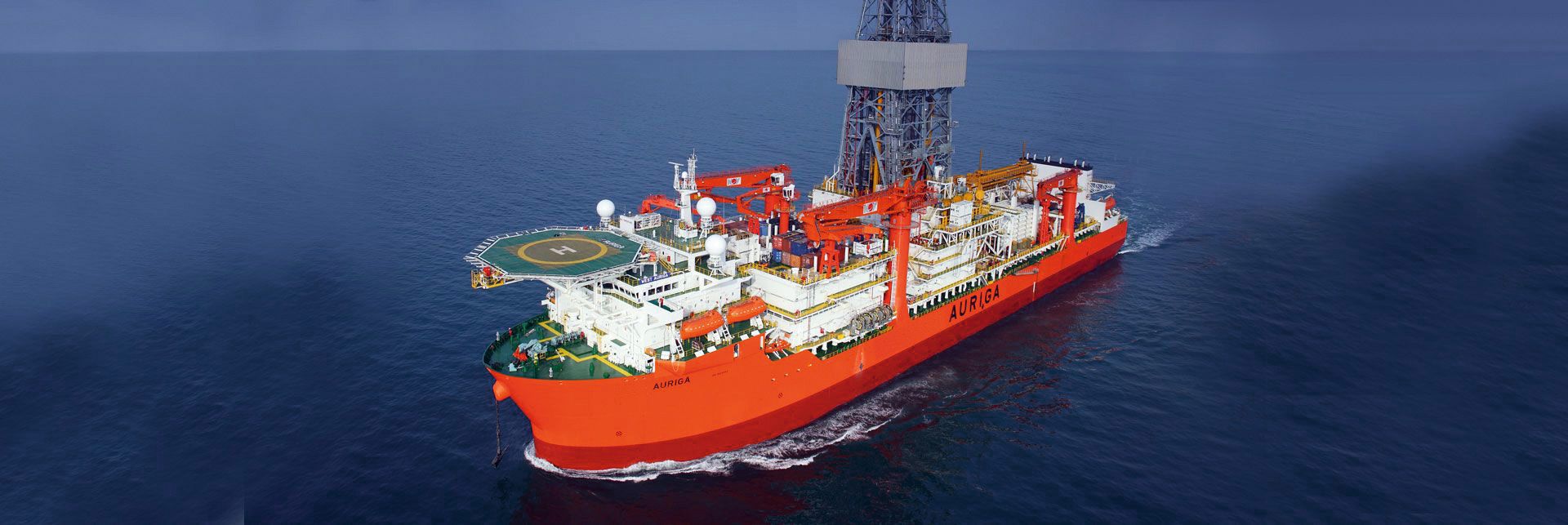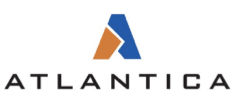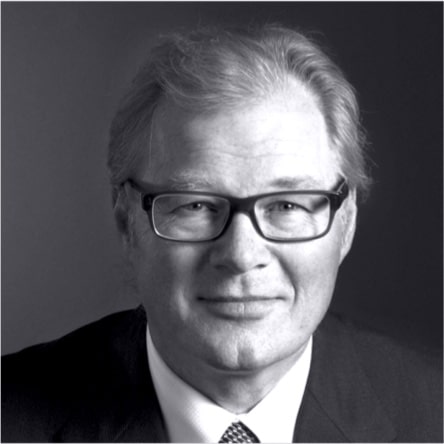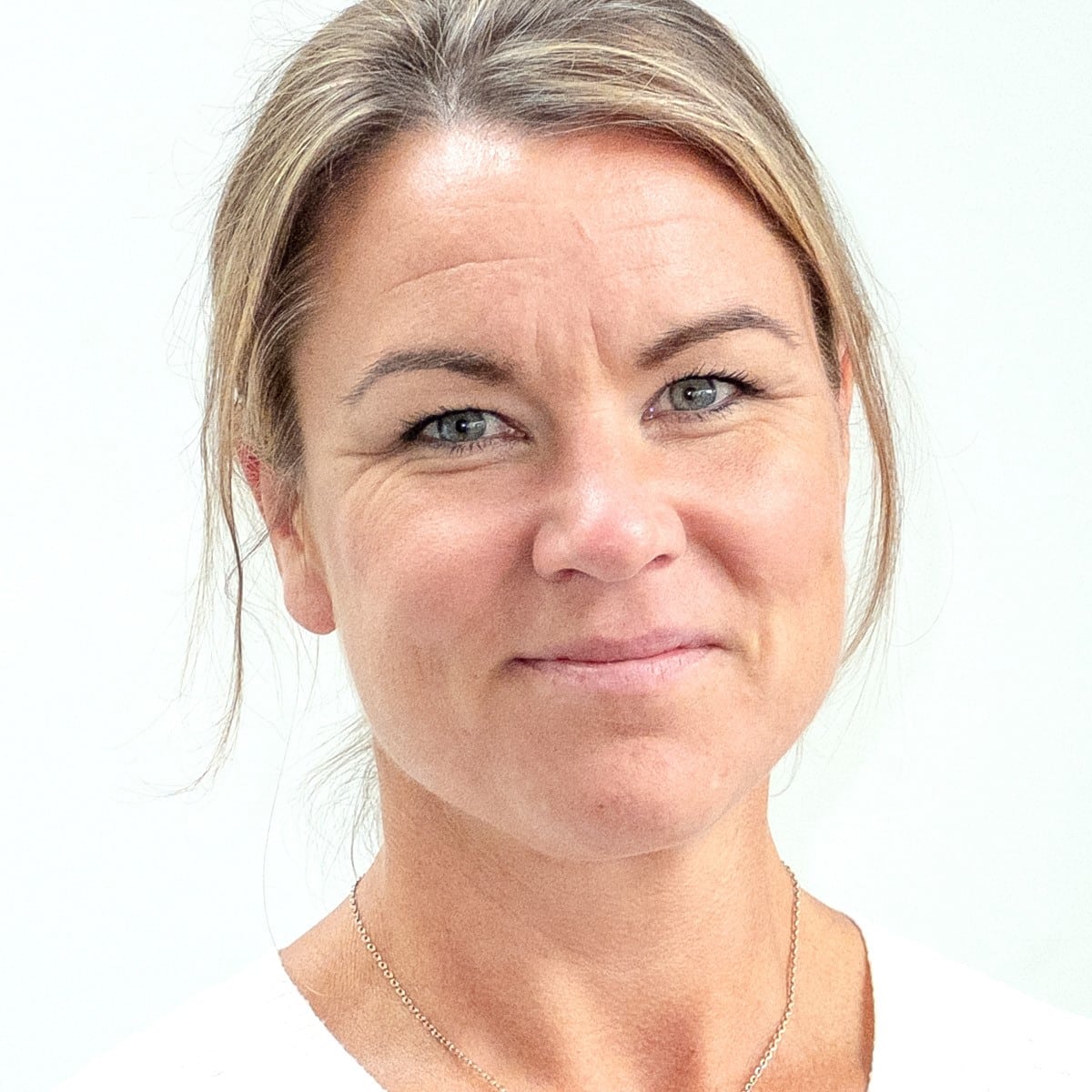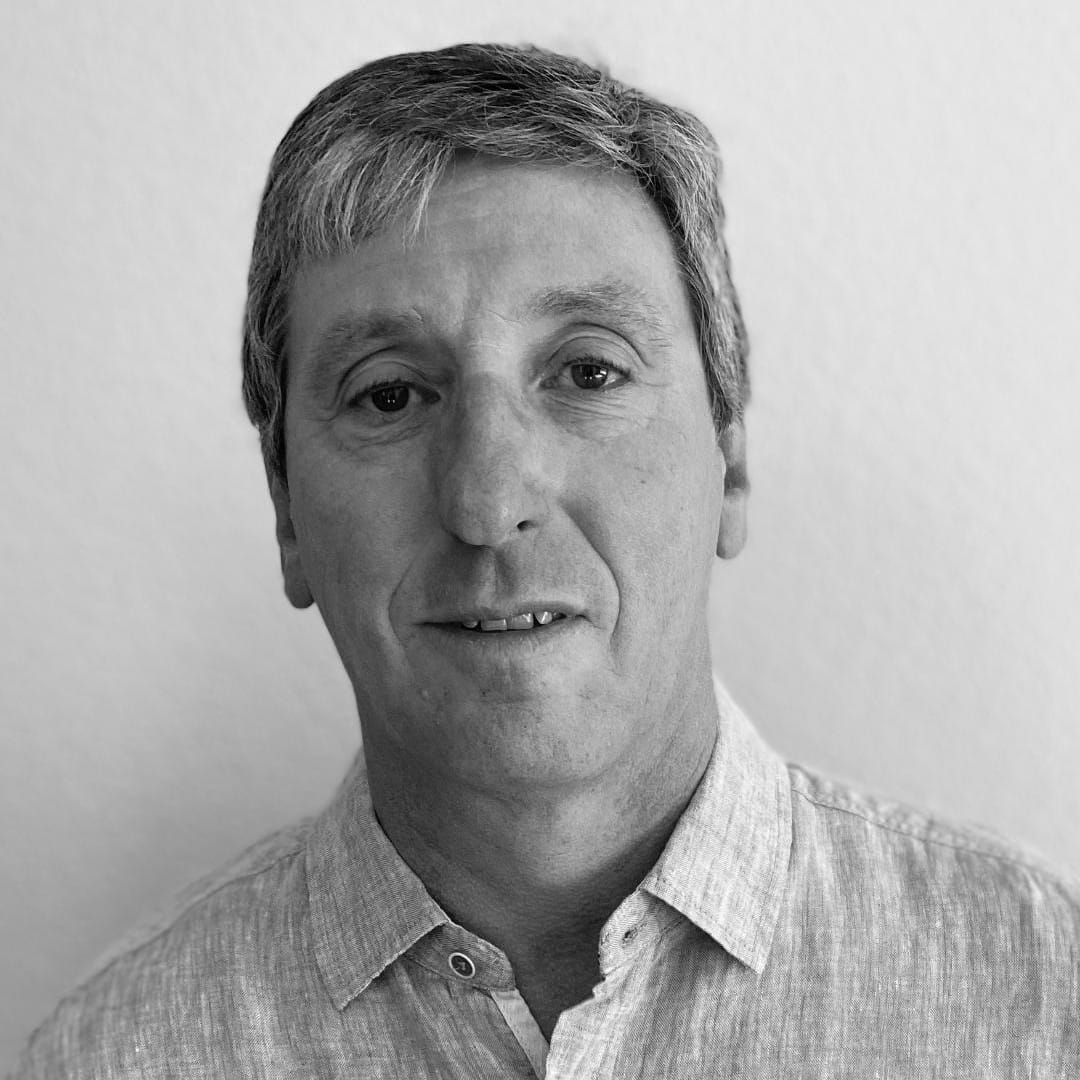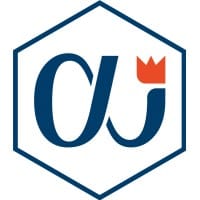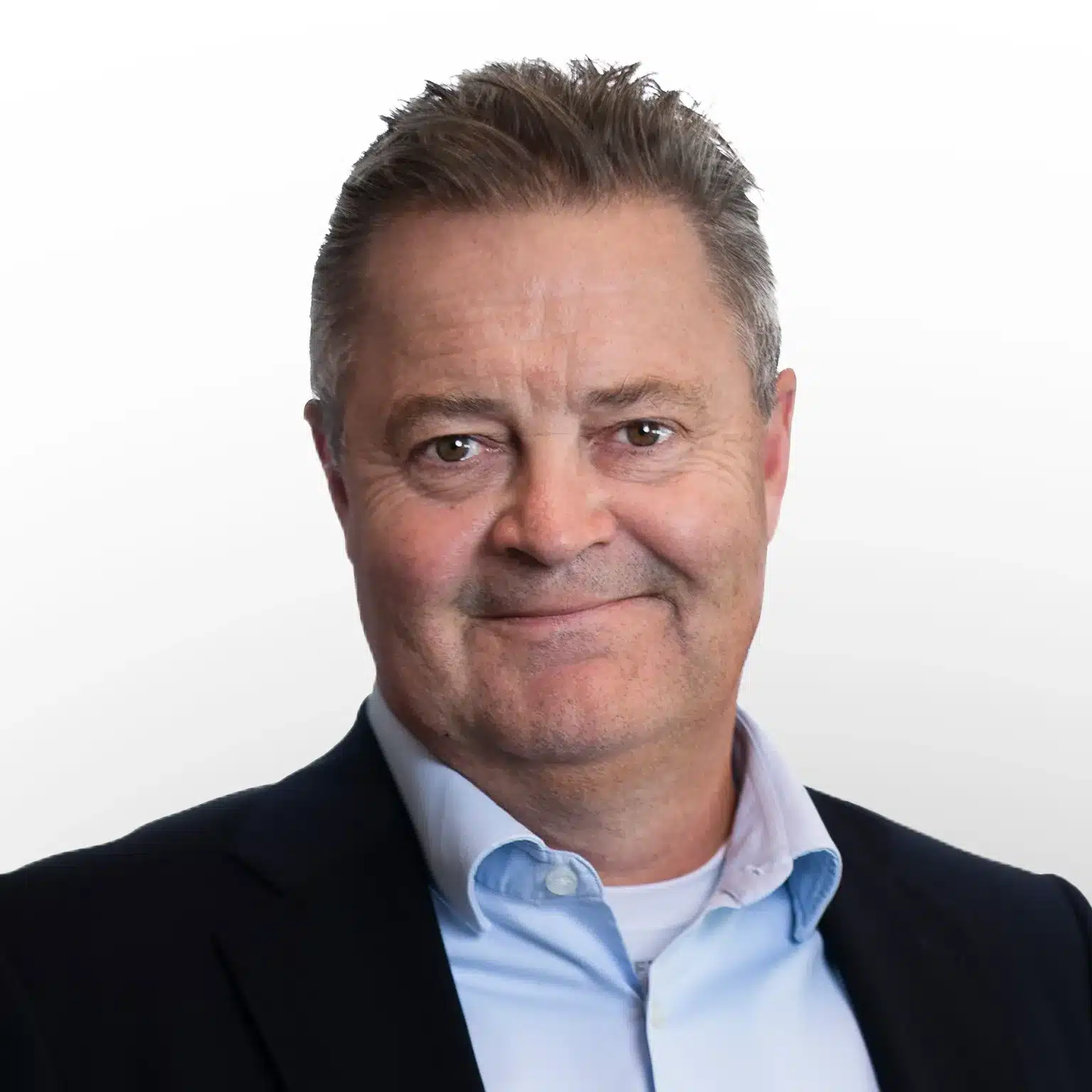This week, a new letter of award for a jackup has been confirmed in Vietnam, whereas a letter of intent for a semisubmersible rig in the UK has expired. Petronas is planning to return to drilling in deep waters offshore Mexico in late 2026, Oil India is seeking a jackup rig for 2025 work, and the New Zealand government is working to reverse the ban on offshore oil and gas exploration.
In case you missed it, you can access our previous Rig Market Roundup here.
Contracts
Malaysia’s Velesto said Monday it has secured a Letter of Award for its 350-ft jackup Naga 3 from Vietnam-based Thang Long Joint Operating Company (TLJOC). Velesto said Naga 3 was expected to be working in Vietnam from September to November 2024, at an undisclosed dayrate. This news comes as the jackup nears the completion of its contract with Petronas Carigali in Malaysia. Velesto’s President, Megat Zariman Abdul Rahim expressed the company’s satisfaction with the opportunity for the rig to return to work in Vietnam, which will allow Velesto to maximise utilisation before Naga 3 undergoes its Special Periodic Survey (SPS) in the first quarter of 2025. “The Southeast Asia jackup market remains robust and we continue to bid actively in Southeast markets,” he said.
Dolphin Drilling’s Letter of Intent (LoI) with an undisclosed operator in the UK for its 1,500-ft semisub Borgland Dolphin has lapsed and the rig is now available for new work from late Q3 2025. The LoI for 500 days of development work in the UK was announced in December 2023, with the contract value including an upfront cash payment and a fixed dayrate. The work was supposed to start after the firm contract with EnQuest in the latter part of 2025, keeping the unit busy throughout 2026. However, Dolphin said in its Q2 2024 conference call that this LoI has now lapsed and the rig is available for new opportunities after the contract with EnQuest, which is expected to start in April and end in August 2025. Dolphin executives stated that, due to the political situation and the uncertainty after the change of government in the UK, the project was slipping until the LoI lapsed. Market sources indicate that the drilling project has been postponed to 2026, with the first oil expected in late 2027. As a result, as of this quarter, Dolphin is showing the rig as free for new work post-EnQuest contract. The increased taxation and the uncertainty around capital allowances related to any investments in the space continue to cause operators to defer decision-making in the short term. The UK government is due to announce the Autumn Budget on 30 October 2024. Dolphin is now looking at several opportunities in the UK North Sea but also internationally, where longer contracts and higher dayrates than those under the lapsed LoI are available. Dolphin’s current focus is to secure back-to-back work for the rig after the EnQuest contract. The rig is currently in Las Palmas where it arrived in June 2024 to undergo reactivation and its special periodic survey (SPS). According to Dolphin, no major steel replacement is required on the rig and the SPS continues to track well within time and cost estimates.
China’s COSL has confirmed it has secured new contracts for two jackup rigs recently suspended by Saudi Aramco. For the 375-ft COSLSeeker, the company announced a three-year contract with ‘the renowned oil company in Southeast Asia,’ which Esgian understands to be Thailand’s PTTEP. The contract is expected to start between 15 December 2024 and 15 January 2025. The rig, which had its contract with Saudi Aramco suspended earlier this year, has yet to start its mobilisation from Saudi Arabia. The 400-ft Zhenhai 6, another of the four COSL rigs suspended by Saudi Aramco, recently arrived in China from Saudi Arabia. COSL has confirmed it is about to start a contract with China’s CNOOC. Although the length of the contract remains undisclosed, it is set to start in late August or early September 2024. COSL informed that the Zhenhai 6 contract was part of the 2023-2025 master services framework agreement between COSL and CNOOC, which runs until 31 December 2025, according to information on the COSL website. As previously reported, following a directive from Saudi Arabia’s Ministry of Energy in January 2024 to maintain the country’s maximum sustainable capacity at 12 million barrels per day, rather than progressing towards the previous target of 13 million barrels per day, Saudi Aramco began issuing suspension notices to the managers of its contracted jackup rigs. It is estimated that, in the first round of suspensions, 22 jackups were suspended. It was reported in July that Saudi Aramco would suspend another five jackup units. The suspensions have impacted rigs managed by companies including ADES, Arabian Drilling, Borr Drilling, COSL, Egyptian Drilling, Saipem, Shelf Drilling, and Valaris. The suspensions are believed to last a year, with drilling firms retaining the right to market the rigs during the suspension period. The original term of the suspended contracts is to be automatically extended for a period equal to the suspension for each rig. However, some drilling contractors have already opted to terminate their Aramco contracts and found opportunities elsewhere. In addition to Zhenhai 6 and COSLSeeker, the 300-ft Hai Yang Shi You 936 and the 375-ft SinoOcean Wisdom are two other COSL-managed rigs understood to have been suspended. COSL has previously stated that it would proactively seek suitable market opportunities for the affected rigs during the suspension period. It remains unclear whether the COSLSeeker and Zhenhai 6 are expected to return to work in Saudi Arabia following the completion of their respective contracts.
Demand
Mexico’s Comisión Nacional de Hidrocarburos has approved a 15-month extension to the first additional exploration period for Lukoil Upstream Mexico, allowing the company extra time to drill the Tsol t’ann-1EXP well. Lukoil Upstream Mexico was awarded Block 12 offshore Mexico in 2017 with a one-well commitment. Water depths at the block run from 492 to 1,312 ft (150 to 400 m). The first additional exploration period for the block began in February 2023. Lukoil cited a lack of availability of drilling equipment in the market as a reason for the extension. In 2022, the company put out a request for information for a floating rig to carry out the drilling of an exploration well and an appraisal well and launched a tender in 2023. Market sources have indicated that the work was pushed forward as sanction concerns had made securing a rig difficult.
Petronas Carigali subsidiary PC Caligari Mexico Operations plans to evaluate its 2023 Naajal-1EXP discovery offshore Mexico, with an expected return to drilling in deep waters on Block 4 off Veracruz and Tabasco in late 2026. Petronas drilled offshore Mexico in the second half of 2023 with Noble 10,000-ft drillship Noble Globetrotter I and encountered oil and gas at the Naajal-1EXP well on contractual area CNH-R01-L04-A4.CS/2016 (Block 4). Yaxchilan Este-1EXP, a well previously drilled on the block in 2019, was unsuccessful as the water got into the well. According to plans filed with Mexico’s Comisión Nacional de Hidrocarburos, PC Carigali Mexico will reprocess 3D seismic data and carry out geophysical and geological studies from now into 2026 and plans to drill the Naajal-2DEL well in the fourth quarter of 2026. The company will also carry out a production test.
Oil India Limited (OIL) has issued a new tender for a jackup rig to work in India in 2025. The tender is for one jackup for drilling, testing, and abandonment of an exploratory well in water depths of up to 80 meters in the KK-OSHP-2018/1 block, offshore Kerala, India, for 180 days plus 30 days for well testing if carried out and 173 days plus 30 days for well testing if carried out for the optional well. The estimated commencement of drilling activities will be circa October / November 2025. Bidders must commit to mobilising the rig to a location within 180 days from the date OIL issues the Mobilisation Notice. A pre-bid conference will take place on 20 September 2024. Bids due date is 22 October 2024. In Q4 2023, Oil India cancelled a tender for a similar scope of work for the West Coast of India.
TotalEnergies is no longer planning to progress its Glendronach and Edradour West wells located in the Greater Laggan Area (GLA) in the West of Shetland. The Glendronach field was discovered in 2018 and is part of the GLA. It was anticipated that the field would be developed with a single well tied back to existing infrastructure, extending the life of the GLA. The project FID was deferred in the second half of 2022. Following an application from September 2022, TotalEnergies was granted consent in October 2022 by the UK authorities regarding the Environmental Impact Assessment connected to the increase in oil and gas production from the Edradour field as a consequence of connecting in the Glendronach well. Bringing the Glendronach well into production by tying it back to Edradour system was expected to bring an increase in oil production of less than 500 tonnes per day and gas production of less than 500,000 cubic meters per day at the Edradour field. In May 2023, Kistos, TotalEnergies’ partner, was ready to sanction the Edradour West and Glendronach developments (subject to JV partner approval), utilising investment allowance under the terms of the EPL. This investment allowance is now expected to be removed under the new, Labour government in the UK. At the time, Edradour West development programme was anticipated to begin by year-end 2023. However, that hasn’t happened and the GLA partners continued to progress options for the Edradour West development during 2024, while the Glendronach development previously passed all technical stage gates with the operator and partners and was undergoing a recycling of economics following changes to the cost environment since it was originally assessed. In late June 2024, TotalEnergies announced the sale of its entire interest in West of Shetland assets – including Laggan, Tormore, Glenlivet, Edradour, and Glendronach fields – to The Prax Group. On 6 August 2024 TotalEnergies filed an amended application to the UK authorities in respect of the project. This was due to an expected change in oil and gas production from the Edradour field as a consequence of a reduction in scope of previously proposed production operations. Namely, according to a document published by the UK’s OPRED, the Glendronach and Edradour West wells will not be progressed and expected production will only continue from the Edradour well.
Mexican regulatory agency Comisión Nacional de Hidrocarburos has approved Hokchi Energy’s plan to develop the Xaxamani field in the shallow water Block 31 offshore Mexico. Pan American Energy subsidiary Hokchi Energy was awarded the production sharing contract (CNH-R03-L01-AS-CS-15/2018) for Block 31 in June 2018, with Talos Energy acquiring a 25% interest in the block later that year. Following up the Xaxamani-1 discovery well drilled by Pemex in 2003, Hokchi Energy confirmed the accumulation of oil at the field in 2019 with the Xaxamani-2EXP well, which was followed by the Tolteca well, drilled with Borr Drilling 350-ft jackup Odin. Hokchi Energy plans to develop the Xaxamani field with 15 wells, four fixed production platforms and an FPSO. First oil from the field is scheduled for early 2028. Hokchi plans to conduct engineering, design and construction work during 2024 and 2025. The company plans to invest over $3 billion in the project.
Mobilisation/Rig Moves
Borr Drilling’s 400-ft jackup Prospector 1 is en route to a North Sea location to start drilling operations for ONE-Dyas. After environmental activists from Greenpeace prevented it from starting drilling operations on the N05-A field for ONE-Dyas in early June, the rig had been in a port in Schiedam, the Netherlands, waiting for the operator to resolve the legal challenges related to the project. On 14 August, ONE-Dyas stated that it had received permits for the development of the N05-A gas field and surrounding prospects in the German part of the North Sea and had all approvals in Germany and the Netherlands for its Dutch-German energy project. The N05-A platform was installed in the Dutch part of the North Sea on 6 August. The rig is now heading to the project location to begin drilling operations. This contract with ONE-Dyas is scheduled to end in October 2024, after which the unit is scheduled to work for an undisclosed operator in the Netherlands from November 2024 to January 2025. In February, it will go back to ONE-Dyas for a contract extension announced by Borr in mid-August. The firm contract is expected to end in April with an option to extend.
Velesto Energy’s 350-ft jackup Naga 2 has completed its mandatory five-year Special Periodical Survey (SPS). The rig had been drydocked in Singapore since 24 June 2024. It will soon move to Sarawak, where it will start a development drilling campaign. Esgian understands that Petronas Carigali will use the Naga 2 rig at the D18 oil field. The Velesto-owned rig is one of three jackups that secured long-term contracts with Petronas Carigali earlier this year.
Seadrill 12,000-ft drillship West Auriga is mobilising out of the US GOM, ahead of a new contract with Petrobras offshore Brazil to begin in late 2024. West Auriga’s current destination is the port in Willemstad, Curacao, according to ship tracking service MarineTraffic. West Auriga and another Seadrill drillship, the 10,000-ft West Polaris, secured 1,064-day contracts with Petrobras for work at the Buzios field offshore Brazil in late 2023. Earlier in August, Seadrill expected a December 2024 start date for this work, citing some delays and unexpected scope in repair and maintenance. West Auriga had been undergoing repair and maintenance in the US GOM since March 2024, when it was handed over to Seadrill by the previous manager Diamond Offshore. This work has included replacing the rig’s BOP stacks.
Diamond Offshore 12,000-ft drillship Ocean BlackRhino has completed work for Woodside at the Sangomar field offshore Senegal and is now moving to Guinea-Bissau. Woodside achieved the first oil from Sangomar in June 2024, while Ocean BlackRhino continued to drill a 24th production well at the field and carry out some completion work into August 2024. Ocean BlackRhino is now moving to Guinea-Bissau to drill the Atum-1 exploration well on the Sinapa licence. This will be followed by the rig entering the yard in Las Palmas, Canary Islands for its special periodic survey and managed pressure drilling upgrade project. A previously announced one-well campaign for the rig with Foxtrot offshore Cote D’Ivoire was terminated in July 2024. This will allow the rig to mobilise to the US GOM in late December or early January to commence a new contract with Beacon.
Dolphin Drilling’s 6,000-ft semisub Blackford Dolphin is expected to begin its drilling contract in India in October 2024. Dolphin terminated the contract with Global Hydrocarbons Limited (GHL) in Nigeria on 30 April 2024 and an arbitration process between the parties is currently in progress. The arbitration process is presently expected to conclude by the end of 2024. Blackford Dolphin started its tow for the drilling campaign in India in July 2024. An official contract signing ceremony for the three-well campaign with Oil India Ltd was held in late July. On its route to India where the rig has made scheduled stops in Namibia and South Africa. It is currently approaching Port Louis, Mauritius, with an expected arrival in India within the next 45 days. Dolphin Drilling stated in its Q2 2024 report on Wednesday that the rig is expected to arrive in India in early October 2024, with drilling commencement expected that month.
Valaris-owned 350-ft jackup Valaris 76 has departed Hamriya in the UAE and is en route to Saudi Arabia to start its drilling campaign for Saudi Aramco. The 1999-built rig left Hamriya on Friday and is expected to arrive at Ras Tanura this week. While in Hamriya, the rig underwent regulatory surveys, upgrades, and refurbishment. The rig is leased to ARO Drilling and is expected to begin a five-year contract with Saudi Aramco in September 2024.
The 350-ft jackup rig Valaris 148 has arrived at the Ras Tanura anchorage in Saudi Arabia, marking the start of its contract suspension with Saudi Aramco. The Valaris 148 is one of five jackups to be suspended as part of the second round of Saudi Aramco jackup suspensions this year announced in July, following suspensions of 22 rigs announced earlier in 2024. This suspension is part of the second round of jackup rig suspensions announced by Saudi Aramco in July, following an earlier round in 2024 that affected 22 rigs. In this latest phase, five jackups are understood to have been selected for contract suspension. Despite the suspension notice, the 350-ft Valaris 147 is still offshore, working for Saudi Aramco. Earlier this month, Valaris said it was in discussion with Aramco on whether other Valaris leased rigs or ARO-owned rigs could be subject to the suspensions instead of the Valaris 147 and Valaris 148, along with the effective date for these suspensions. The earlier round of suspensions this year impacted rigs managed by companies including ADES, Arabian Drilling, Borr Drilling, COSL, Egyptian Drilling, Saipem, and Shelf Drilling, and Valaris. During the first round, the 350-ft Valaris 143, then managed by ARO Drilling, was suspended. Following the suspension, ARO Drilling terminated the drilling contract with Aramco and the bareboat charter with Valaris. The Valaris 143 was returned to Valaris and has been cold stacked in the United Arab Emirates. These suspensions are linked to a directive issued by Saudi Arabia’s Ministry of Energy in January 2024, aiming to maintain Saudi Arabia’s maximum sustainable capacity at 12 million barrels per day, rather than progressing towards the previous target of 13 million barrels per day.
Seadrill 10,000-ft drillship West Polaris is mobilising out of Singapore ahead of a new contract with Petrobras offshore Brazil. The current destination for the rig is South Africa, according to ship tracking service MarineTraffic. The rig will likely make a brief stop there before continuing onwards to Brazil. In late 2023, West Polaris and Seadrill drillship West Auriga secured 1,064-day contracts with Petrobras for work at the Buzios field offshore Brazil. Earlier in August, Seadrill expected a December 2024 start date for this work, citing some delays and unexpected scope in repair and maintenance. West Auriga began its own journey from the US GOM to Brazil earlier this week. West Polaris had been undergoing repairs and maintenance at the Seatrium yard in Singapore since March 2024, when it was handed over to Seadrill by previous manager Vantage Drilling.
Other News
Eldorado Drilling AS has acquired $275 million in senior secured debt financing, to be used to finance the delivery of 7th generation 12,000-ft drillship Draco, also known as West Draco. Proceeds will also be used for contract readiness costs, working capital and general corporate purposes. The financing came from Beal Bank and its affiliate CSG Investments Inc. Fearnley Securities acted as financial advisor to Eldorado in the transaction. The newbuild Draco is under construction at Samsung Heavy Industries in South Korea. Pelago Management is overseeing the delivery of the rig as project manager. Diamond Offshore signed an agreement in May 2024 to market the rig in Brazil, Latin America, West Africa, Malaysia and Indonesia. In February 2024, Eldorado secured $275 million in senior secured debt financing to finance the delivery of the 12,000-ft drillship Zonda.
UK operator Harbour Energy now expects to complete the acquisition of the Wintershall Dea asset portfolio in early September. The previous guidance for the completion was early in the fourth quarter of 2024. Harbour reached an agreement with BASF and LetterOne, the shareholders of Wintershall Dea, for the acquisition of substantially all of Wintershall Dea’s upstream assets for $11.2 billion back in December 2023. The target portfolio includes all of Wintershall Dea’s upstream assets in Norway, Germany, Denmark, Argentina, Mexico, Egypt, Libya, and Algeria as well as Wintershall Dea’s CO2 Capture and Storage (CCS) licences in Europe. Wintershall Dea’s Russian assets are excluded. Harbour said on Tuesday that this new schedule follows considerable progress made on satisfying the conditions to completion, including the recent receipt of Mexico regulatory consents.
Marine conservation organisation Oceana UK has moved forward with its legal challenge over new fossil fuel exploration licences in UK waters, filing its case at the High Court. Oceana and other members of the Ocean Alliance Against Offshore Drilling have written to Ed Miliband, the Secretary of State for Energy Security and Net Zero, urging the new government to accelerate the UK’s move away from fossil fuels and concede Oceana’s case. The organisation stated the previous government’s decision to issue 31 new oil and gas licences in May 2024 was unlawful because it failed to consider the extreme impact of oil spills on marine life, as well as on several other grounds. The letter – signed by Greenpeace UK, Friends of the Earth Scotland, Rewilding Britain, Oceana and others – highlights Oceana UK’s legal challenge to the new oil and gas licences and asks that the Secretary of State ‘brings an end’ to the licences which overlap with several areas designated for wildlife. It invites the government to concede the claim and signal a ‘clear departure’ from the reliance on fossil fuels. The claim will challenge the ‘Appropriate Assessments’ made by the former Secretary of State under the Conservative administration, arguing they largely ignored advice from independent government experts about the potential effects on sensitive Marine Protected Areas (MPAs).
Responding to local media rumours, United Oil & Gas has stated that it has not drilled wells at the Walton-Morant licence offshore Jamaica and thus has made no oil or gas discovery. The company’s 2024 to 2026 work programme involves conducting piston core sampling to detect any oil residue before considering future exploration targets. United holds a 100% working interest in Walton Morant and is currently engaged in a farm-out process, with the aim of securing a partner for future work. United received a two-year extension for the licence in January 2024. United CEO Brian Larkin stated that the Walton-Morant area contains “numerous promising prospects” and that there has been “positive interest” from several parties on a farm-in. In a recent investor presentation, the company projected possible exploration drilling in 2026/2027.
Diamond Offshore Drilling, Inc. held a special meeting of its stockholders on 27 August 2024. Shareholders voted on and approved a proposal to adopt the agreement and plan of merger between Noble Corp. and Diamond Offshore. Noble Corp. announced the agreement to acquire Diamond Offshore in June 2024. Completion of the merger is expected to close by the first quarter of 2025. A proposal related to compensation for Diamond Offshore’s executive officers was also approved at the special meeting.
Dolphin Drilling reported an increase in revenues for the second quarter of 2024 and a reduction in net loss compared to the first quarter of the year driven by a full quarter with the 1,969-ft semisub Paul B. Loyd, Jr. in operation following the rig’s integration into the fleet. Dolphin reported total revenues of $16.4 million in Q2 2024, excluding all earnings related to the GHL Nigeria contract in Nigeria for the Blackford Dolphin, compared to $10.1 million in Q1 2024. The revenues in the second quarter reflect a full quarter with the Paul B. Loyd, Jr. in operation. The company reported a net loss for the quarter of $14.1 million, compared to a loss of $16.8 million in the prior quarter. For the first half of 2024, the company generated total revenues of $26.4 million. The challenging situation in Nigeria significantly impacted the business with no revenues recognised despite four months of activity on the 6,000-ft Blackford Dolphin and further significant costs incurred to continue to operate the rig. Net income totaled a loss of $30.9 million year to date. Dolphin has a firm revenue backlog of $431 million. Dolphin believes that, in the medium term, the outlook for the offshore floater rig segment is largely driven by rig supply characteristics, and the actual available rig supply. Following a decade of weak rig demand, the moored rig segment has seen the total rig fleet reduced by 75%. The remaining moored fleet continues to shrink leaving potentially less than 10 rigs available to service the global market. Shallow and midwater areas requiring moored rigs include parts of South America, North America, Africa, Asia and Pacific, as well as the North Sea region, which earlier was the key demand region for moored rigs. The UK region has seen its total rig fleet reduced from more than 20 rigs to less than a handful of capable semisubmersible rigs. According to Dolphin, the potential result is that future drilling campaigns, including decommissioning works, may require rigs to be sourced from other regions at significant cost. The vast reduction in the supply side of the industry coupled with international demand dynamics could also result in a severe under supply situation in the UK in the very near future.
The Egyptian Natural Gas Holding Company (EGAS) has launched a new international bid round including 12 exploration blocks in the Mediterranean Sea and Nile Delta. The round includes ten offshore blocks and two onshore blocks. Bids are due to be submitted by 25 February 2025. This initiative is a key component of the Ministry of Petroleum & Mineral Resources’ strategy to attract new investments into Egypt, focusing on leveraging opportunities in oil & gas exploration, especially in the Mediterranean Sea.
TotalEnergies has taken over the operatorship of Block 3B/4B in the Orange Basin offshore South Africa after the completion of an agreement with Africa Oil Corp that has TotalEnergies and QatarEnergy farm in to the block. Block 3B/4B covers a 17,581 sq km area within the Orange Basin offshore South Africa in water depths ranging between 984 ft and 8,200 ft (300 m and 2,500 m). TotalEnergies now has a 33% operated interest in Block 3B/4B, while QatarEnergy has 24%, Africa Oil subsidiary AOSAC has 17%, Ricocure has 19.75% and Eco Atlantic subsidiary Aziman has 6.25%. Prior to the agreement, Africa Oil had a 26.25% interest. The transaction has a maximum value of up to $46.8 million to Africa Oil, with the company to receive staged cash payments and a full carry of its 17% share of all joint venture costs, up to a cap. These costs will be repayable to TotalEnergies and QatarEnergy from production in case of exploration success and development. Prior to the closing, Africa Oil submitted an environmental and social impact assessment for exploration drilling on Block 3B/4B. This is expected to take place in 2025. In a separate agreement, Africa Oil’s subsidiary AOSAC will acquire an additional 1% interest in the block from Eco Atlantic subsidiary Azinam, subject to approvals from the government of South Africa.
EOG Resources Trinidad and bp Trinidad and Tobago have agreed to partner on the Coconut development offshore Trinidad, taking a final investment decision and planning for the first gas in 2027. Coconut will be a 50/50 joint venture with EOG as the operator. The Coconut field is off the southeast coast of Trinidad in the Columbus Basin and was discovered in 2005 by bp in a water depth of 260 feet. EOG Resources and bp have previously partnered on the EMZ, Servan, Banyan and Mento developments offshore Trinidad, with Mento to be brought online in 2025. EOG Resources is understood to currently have Valaris 400-ft jackup Valaris 249 under contract offshore Trinidad & Tobago, with a future contract lined up from December 2024 to October 2025. Valaris 350-ft jackup Valaris 118 is contracted to bp offshore Trinidad into June 2025.
The New Zealand Government said this week it would urgently act to reverse the ban on offshore oil and gas exploration, imposed by the previous administration in 2018. In a joint statement, Minister for Energy Simeon Brown and Minister for Resources Shane Jones confirmed their intention of passing legislation to overturn the offshore oil and gas exploration ban by the end of 2024. According to the government, natural gas production dropped by 12.5% in 2023 and by a further 27.8% for the first three months of this year, leading to a nationwide shortage. This decline has resulted in reductions in manufacturing output, and electricity generators resorting to more coal and diesel to power our electricity system, the government said. Resource minister Shane Jones said the government was taking urgent action to shore up the country’s energy security. “Oil and gas explorers need to have the confidence to invest here and know they will have a key place in New Zealand’s energy sector now and into the future,” Jones said. In addition to lifting the offshore exploration ban, the cabinet has committed to removing regulatory barriers to the construction of LNG import facilities as a stop gap, easing restrictions on electricity lines companies owning generation assets, ensuring access for gentailers to hydro contingency, and improving electricity market regulation. There are currently no offshore drilling rigs in New Zealand. The most recent offshore well drilled in the country was the Kupe South-9 development well in late 2023 using the 400-ft jackup Valaris 107. Brought online in the first quarter of 2024, the well’s production levels fell short of expectations. The Valaris 107 has since moved to Australia and is employed by Santos on a P&A campaign.
Finder Energy has completed the acquisition of a 76% interest in PSC 19-11, offshore Timor-Leste. As reported earlier in August, Finder had entered into conditional sale agreements with Eni and Inpex to acquire a 76% interest in, and operatorship of, PSC TL-SO-T 19-11 (PSC 19-11) offshore Timor-Leste. The remaining 24% is held by TIMOR GAP, the national oil company of Timor-Leste. The PSC includes four discovered but undeveloped oil fields, including the fully appraised Kuda Tasi and Jahal fields, which together hold a 2C oil resource of 22 MMbbl. This, according to the company, allows for rapid progress to production, with additional upside from low-risk appraisal and exploration opportunities. Damon Neaves, Managing Director, said: “This acquisition transforms Finder into a developer with 34 million barrels (net) of discovered oil and an exciting period of rapid development activity and value catalysts ahead of us. Our highest priority will be to fast-track the development of the Kuda Tasi and Jahal Oil Fields and we have laid out a clear path to FID and first oil.”
As part of a drive towards greater transparency, the UK regulator, the North Sea Transition Authority (NSTA), has launched a consultation looking at operators’ decommissioning obligations and the enforcement process. The consultation on the measures launched on Thursday 29 August asks about publishing operator names earlier in the sanctions process, as well as publishing a new decommissioning league table. The consultation will last for eight weeks, ending on 31 October 2024. According to the NSTA, investigation details into potentially substandard performance among North Sea operators could soon be reported to focus momentum on the energy transition and ensure a level playing field for licensees. It is also hoped that, if the proposals are enacted, companies will be more motivated to fulfil their decommissioning obligations which will, in turn, benefit the supply chain by providing decommissioning contracts. Currently, a company under investigation is only named in the event of a sanction being issued. If adopted, the new proposals would result in a company being named earlier in the process when an investigation is opened, or notice has been sent warning that a sanction is under consideration. The consultation proposes greater transparency in the following circumstances: Where the NSTA opens an investigation into a potential breach of a petroleum-related requirement; Where the NSTA issues a Sanction Warning Notice; Should the NSTA publish the names of companies that have missed decommissioning deadlines, alongside details of the wells? Should the NSTA publish an annual league table of well decom performance? The enforcement process is intended to remind the wider industry of their obligations and demonstrate that the North Sea operates under a stable and predictable regulatory system in addition to potentially sanctioning licensees in breach of regulatory requirements. From 2018 to 2023, decommissioning activities were carried out on 120 wells on average per year. However, there are about 940 inactive wells that need to be decommissioned and currently there are more than 500 that have missed their original deadline. Earlier this year, the NSTA opened investigations into missed deadlines for well decommissioning, urging operators to take action on well decommissioning to support the UK’s supply chain, clean up their oil and gas legacy and stop costs spiralling. The NSTA says that missing deadlines has a negative impact on the industry’s reputation and also affects the supply chain, which is unable to plan effectively. In the long-term, this leads to inefficiency and higher costs in an area which is already estimated to cost a total of £10bn from 2023 to 2032. The proposals in the consultation would see companies which have fallen behind in their commitments named, alongside a summary of work they have yet to complete and the publication of an annual league table of operator performance.
Velesto Energy’s drilling services segment has posted improved second-quarter results compared to the corresponding period in 2023, with an increase in revenue and profit. The company’s drilling services segment reported revenue of RM298 million (~$69.1 million), an increase of RM84.6 million (~$19.6 million) compared to Q2 2023 revenue of RM213.4 million (~$49.5 million). On the back of the increased revenue, the drilling business registered a profit before tax of RM102.3 million (~$23.7 million), an increase of RM59.0 million (~$13.69 million) compared to the profit before tax of RM43.3 million (about $10 million) in the corresponding quarter of 2023. During the quarter, Velesto managed to secure higher average daily charter rates for its jackup fleet which rose to $115,000 per day from $94,000 per day in Q2 of 2023, and utilisation rate increased to 98% from 88% in Q2 2024. Also, the operating efficiency reached 99.8% in Q2 2024, up from 96.1% in the Q2 2023. All rigs were contracted during the Q2 quarter, except for the 350-ft Naga 2, which started a Special Periodic Survey (SPS) in June 2024. The SPS was completed this week and the rig will return to work in September. Looking ahead, Velesto expects its utilisation to drop in the second half of 2024 due to three of its rigs, the Naga 2 (completed), Naga 5, and Naga 6, scheduled for their Special Periodic Survey and 5-yearly maintenance in the second half of the year. ”Utilisation is expected to remain stable in 2025, with the Naga 2, Naga 4, and Naga 6 contracted until Q1 2026, and Naga 8 up to Q4 2025, respectively. Meanwhile, the Group is actively bidding for new tenders in local and international markets, particularly for the Naga 3 and Naga 5 for activities to be performed in Q4 2024 and 2025, and for 2026 and beyond for all our other rigs,” Velesto said. Velesto has recently secured a short-term contract in Vietnam for the Naga 3 rig, and the Naga 5 will soon complete its contract with Hess in Malaysia. Velesto’s group order book stood at RM1.3 billion as at July 2024 (~$301 million).
Image credit: Seadrill
